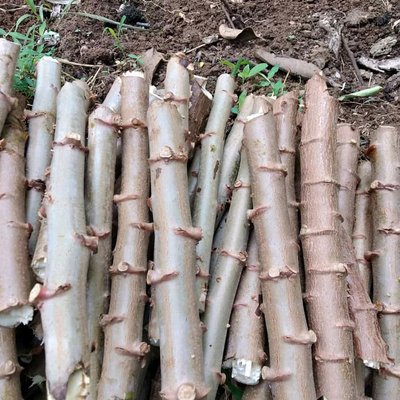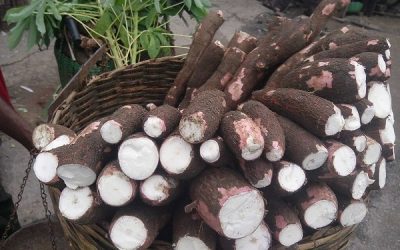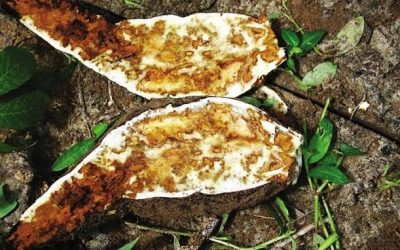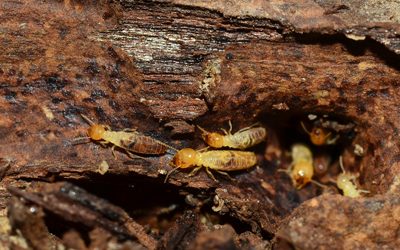Recommendations for selecting good quality cassava

Cassava is propagated by planting pieces of the stem (stem cuttings). The development of cassava and amount of yields depends on the quality of stem cuttings. There are several cassava pests and diseases, which are stem-borne. Selecting healthy stem cuttings reduces the spread and damage caused by pests and diseases.
– Select planting material from healthy growing, high-yielding, 8 and 18-month old cassava plants. Healthy cassava plants have robust stems and branches, lush foliage, and minimal stem and leaf damage caused by pests and diseases.
– From each plant, select the middle, brown-skinned portion of stems as stem cuttings. The stems should be 2 to 4cm thick. These parts sprout and ensure plant vigour better than the top green stem portions.
Stem cuttings taken from the top green portions or extreme top and bottom portions of stems are unsuitable. They will dehydrate quickly, produce unhealthy sprouts, and are easily damaged by pests and diseases.
– Tie the stems in bundles and wait for at least 10 days before planting them. The harvested stems can be stored for over 2 months in dry, well-ventilated, shaded areas away from direct sunlight until it is time for planting.
One simple method of storing stems consists of arranging them vertically under a shady tree, with the oldest part of the stem buried in the soil. The soil should be moist to keep the stems ‘alive’ as leaves will form on the upper part of the stems.
After storage, discard the top and basal parts of the stems, and use the middle part as cuttings.
Another method, mainly used under cold conditions, consists of storing the stems in underground tunnels, which are protected from water. The stems are placed inside the tunnel on top of a layer of dry straw, and then covered with another layer of straw and soil.


